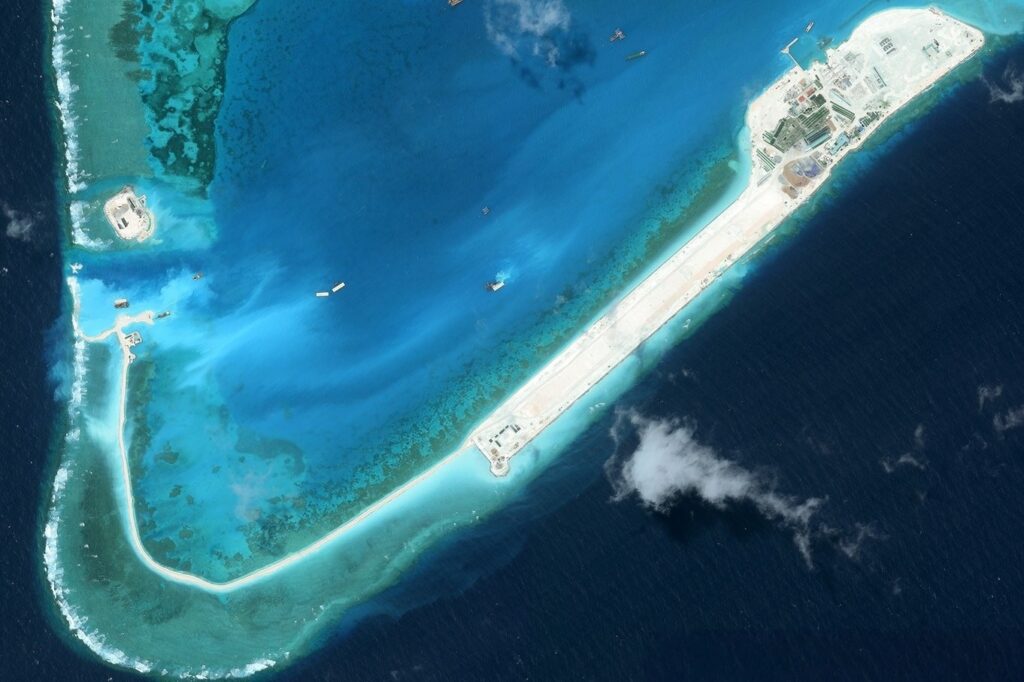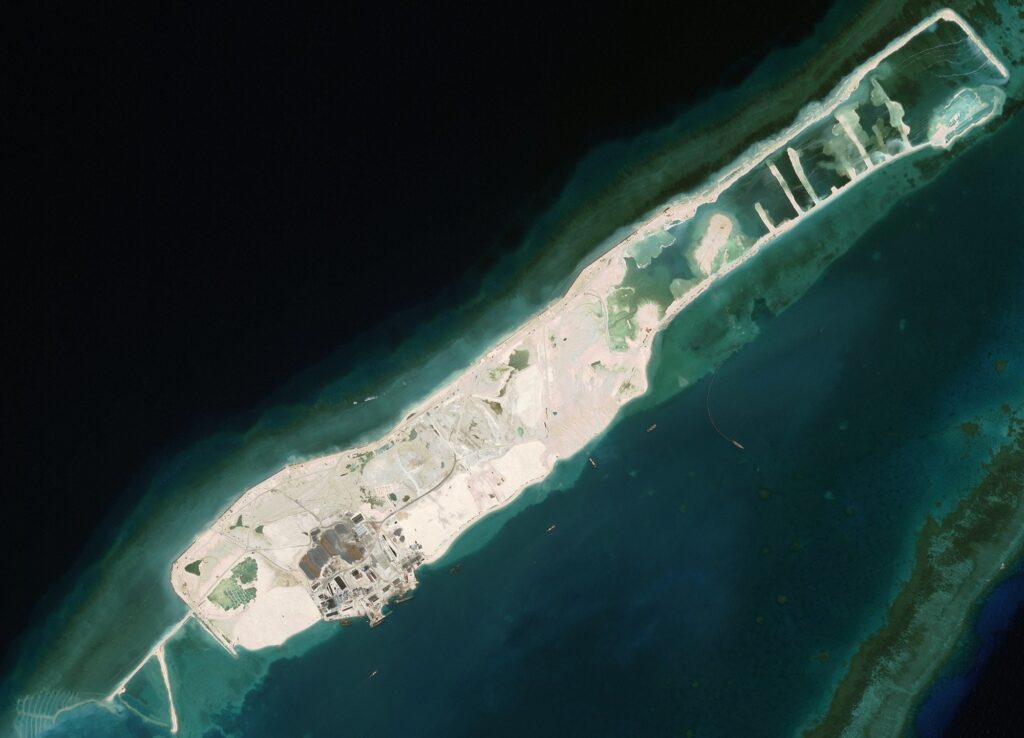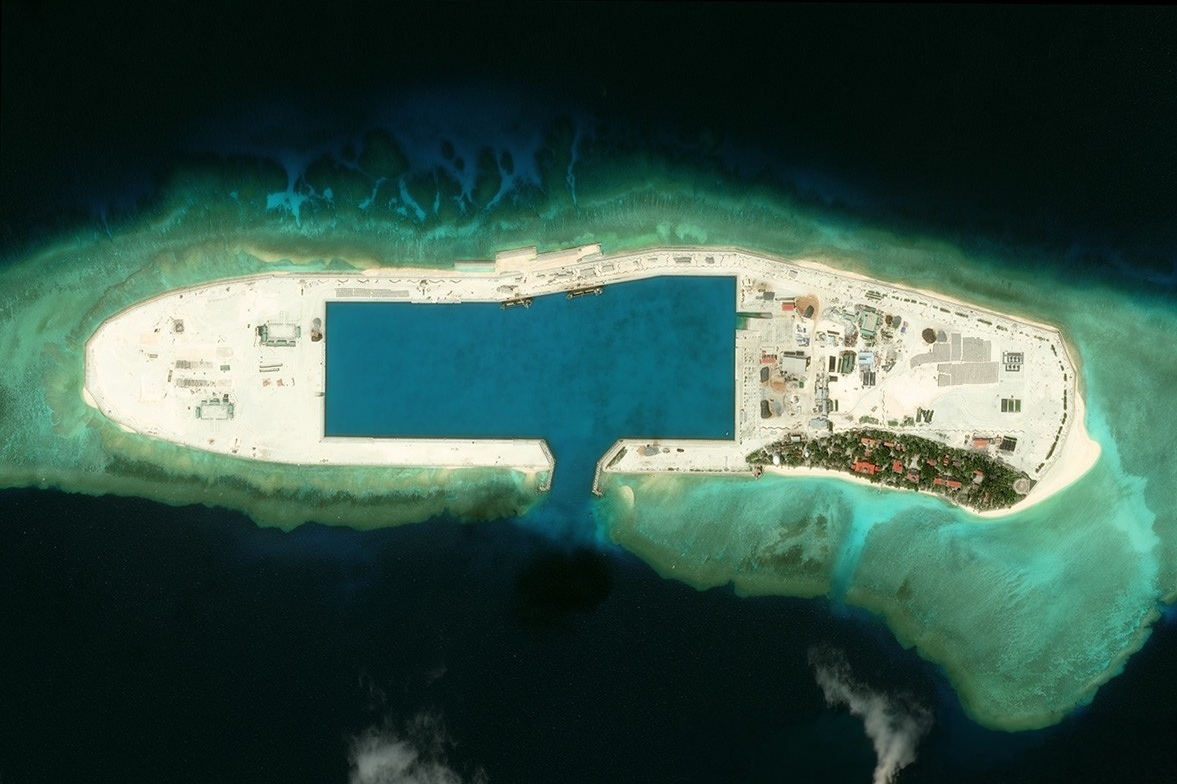Vietnam’s Spratly buildup seen shifting balance for Philippines in South China Sea
Vietnam’s accelerating maritime construction in the South China Sea is shifting the balance of power in one of the world’s most contested waterways, with direct consequences for the Philippines as it confronts increasingly assertive Chinese actions in waters it claims.
The Center for Strategic and International Studies (CSIS) reported on August 22 that satellite images show Hanoi has reclaimed land at eight reefs since the start of 2025, expanding artificial land to all 21 Vietnamese-occupied outposts in the Spratly Islands. The chain, which lies close to Palawan in the Philippines, is also claimed by Manila, which has struggled to sustain supply missions to its garrisons amid Chinese interference.

“As of March 2025, Vietnam had created about 70% as much artificial land in the Spratlys as China had,” the Washington-based think tank said. “Reclamation at these eight new features all but ensures that Vietnam will match—and likely surpass—the scale of Beijing’s island-building.”
Vietnam’s efforts extend to reefs that just four years ago hosted only small concrete pillboxes, including Alison, Collins, East, Lansdowne, and Petley, as well as expansions at Amboyna Cay, Grierson Reef, and West Reef.
New facilities have also appeared at Barque Canada Reef, Discovery Great Reef, Ladd Reef, Namyit Island, Pearson Reef, Sand Cay, and Tennent Reef, with munitions storage containers and clusters of identical buildings arranged around courtyards. Barque Canada Reef has emerged as the centerpiece, already housing three depots and foundations for additional structures, with CSIS noting that a runway under construction there will likely become Vietnam’s second airstrip in the Spratlys after Spratly Island itself.

The pace of construction underlines Hanoi’s determination to consolidate its claims, but it also highlights the widening gap between Southeast Asian claimants. Manila, despite winning a landmark 2016 ruling by the Permanent Court of Arbitration that invalidated Beijing’s sweeping maritime claims, has seen its positions in the Spratlys increasingly vulnerable. Philippine troops stationed on the grounded BRP Sierra Madre at Second Thomas Shoal have faced repeated attempts by Chinese coastguard vessels to block resupply missions, testing Manila’s capacity to enforce sovereignty in the waters it calls the West Philippine Sea.
Vietnam’s growing footprint could serve as a counterweight to Beijing’s dominance, but it also complicates the Philippines’ security calculus. By creating resupply hubs and defensive infrastructure, Hanoi enhances its staying power in areas where Manila remains stretched thin. Analysts say this may embolden Vietnam to play a more assertive role in regional maritime disputes, potentially reinforcing collective resistance to China but at the same time narrowing the Philippines’ maneuvering space.
Beijing has long opposed reclamation by other claimants and has protested both Vietnamese and Philippine activities in the Spratlys. Yet China continues to expand its own presence, deploying coastguard, navy, and militia ships across disputed areas. For Manila, the result is an increasingly crowded and militarized seascape where its interests are caught between two regional rivals pressing their claims with concrete, steel, and airstrips.
The Philippines has responded by deepening defense cooperation with the United States, Japan, and Australia, while upgrading facilities on Thitu Island and planning new deployments in Palawan. But compared with the scale of reclamation by China and now Vietnam, its construction remains modest. The risk for Manila is that while it resists Beijing’s pressure, it could find itself outpaced by Hanoi’s ambitions in the very chain of islands it also calls its own.
The South China Sea is vital for global trade and rich in resources, but its importance for the Philippines is existential. Each new runway or depot not only shifts the military balance but also erodes the fragile space for diplomacy.
As Vietnam expands its foothold and China consolidates control, Manila faces the reality that without stronger capacity and alliances, its position in the Spratlys risks being marginalized.



0 Comment